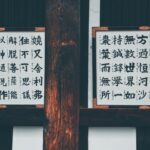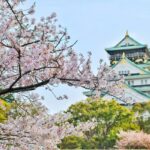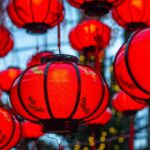
Why do people love New Year’s so much?
The holiday presents a time to renew, a fresh start. This is true even in Japanese culture.
New Year is a time to start fresh, set goals, and reflect on the past year. And what better way to do all of that than by participating in the Japanese New Year? The type of traditions that serve to represent a long and prosperous life.
Are you ready to learn all about new year traditions in Japan? Then keep reading!
Celebrate Oshogatsu
Oshogatsu, or Japanese New Year, is the most important holiday in Japan. The country shuts down for a week from December 31st to January 1st, and families come together to celebrate.
One of the most important traditions during oshogatsu is the mochi-Tsuki ceremony. They pound the rice into sticky, chewy mochi (rice cakes). The whole family often does this ceremony, and it’s a great way to bond and build up everyone’s strength for the year ahead!
Another tradition is eating osechi ryori, a particular type of New Year’s cuisine prepared in advance and eaten cold. Osechi usually consists of fish, vegetables, and other dishes meant to last throughout the holiday.
Purpose of Kagami Mochi
Kagami mochi is a type of rice cake that is traditionally eaten during the new year in Japan. The name Kagami mochi literally means “mirror mochi,” and it is so named because the round shape of the mochi resembles a mirror.
Kagami mochi is usually placed on an altar or shelf during the new year as an offering to the gods. It is also used in various ceremonies and rituals, such as the breaking of the New Year’s mochi, which is said to bring good luck for the coming year.
You can find Kagami mochi at most Japanese grocery stores, or you can make your own using sweet rice flour and water.
Meiji Jingu in Tokyo
Tokyo is a city of contrasts, where traditional temples sit alongside towering skyscrapers. Nowhere is this more apparent than at Meiji Jingu, a Shinto shrine located in the heart of the city.
The shrine came about in 1920. It’s purpose is to honor Emperor Meiji and his wife, Empress Shoken, and it remains an important pilgrimage site for many Japanese people.
However, Meiji Jingu is also a popular destination for overseas visitors who come to learn about Japanese culture and soak up the atmosphere of this peaceful oasis. If you’re planning a visit to Meiji Jingu, here are a few tips to make the most of your experience.
First, be sure to dress appropriately. Shrines are special places, so it’s important to show respect by wearing modest clothing. Second, take your time and wander around the grounds.
There’s plenty to see, from the massive torii gate at the entrance to the beautiful gardens. And third, don’t forget to pick up a souvenir at one of the many stalls selling traditional handicrafts.
From lucky charms to wooden toys, there’s something for everyone at Meiji Jingu. By following these tips, you’re sure to have a memorable visit to one of Tokyo’s most iconic landmarks.
Finally, on New Year’s Eve, families gather together to watch the annual televised broadcast of the temple bell ringing ceremony from Tokyo’s Zojo-Ji temple. This signals the beginning of a new year, and after ringing the bell 108 times, everyone eats soba noodles for good luck. Then it’s off to bed early since the first sunrise of the new year (Hatsu-Hinode) is a lucky time!
Understanding Fukubukuro
Fukubukuro, which means “lucky bag” or “mystery sack,” is a popular way to celebrate the new year in Japan. Many businesses put together special bags filled with a variety of items, including both new and limited edition products, and sell them at a discount price. The contents of the fukubukuro are usually a surprise, which makes them all the more fun to purchase and receive.
Understanding Hatsumode
Hatsumode is the first shrine or temple visit of the new year. It is good luck to be one of the first visitors of the year to a shrine or temple. People travel from all over Japan to do hatsumode at famous shrines and temples such as Meiji Jingu in Tokyo or Fushimi Inari Taisha in Kyoto.
Shrine Tips
Will this be your first time visiting a shrine? Before you can enter, you’ll want to know the rules.
For instance, you’ll need to purify yourself before entering. You can do this by washing your hands and mouth at the temizuya, a purification fountain usually located near the entrance.
When you enter the shrine grounds, you’ll see a large torii gate. Go through this gate to enter the holy space of the shrine.
Once you’re inside, you’ll want to find the main hall (honden), where the kami, or Shinto deities. Offer a short prayer at the honden, then clap your hands twice to get the kami’s attention. Make your wish, then bow twice and clap your hands again.
After praying, it’s customary to make a small offering of money (typically a coin) into the collection box at the shrine. This is a saisen.
Finally, pick up an omikuji, or fortune, from the stand near the exit. These fortunes are on strips of paper, and you can choose one by shaking a container full of them until one falls out. Be sure to tie your fortune onto one of the nearby racks since taking it home with you is bad luck!
It’s fascinating to learn about the things people view as bad luck. There are a lot of those superstitions in American culture too! Guess it’s a worldwide experience.
What Do You Wear for the Japanese New Year?
For the Japanese New Year, people typically wear traditional clothing such as kimonos or yukatas. Men often wear haori jackets over their kimonos.
Women may wear furisode, which are long-sleeved kimonos. Children typically dress in kimonos as well, though they may also wear Western clothes such as jeans and t-shirts.
Kimonos are a wonderful part of Japanese fashion. If you buy a kimono for yourself, you’ll want to be careful with the sizing. It needs to fit just right to be comfortable and functional.
Drinking Toso
It wouldn’t be a holiday without special spirits! Toso is a special type of sake that is drunk on New Year’s Eve in order to purify oneself and ward off evil spirits for the new year. You can check out this article to understand how much sake it takes to start feeling the effects.
Toso is special since it’s made by adding various spices such as cloves, cinnamon, and hiredoku (a type of Chinese herb) to sake. You can try making your own; all you need are the right quality spices!
Going Beyond New Year
What about other holidays in Japan? How are they celebrated? Setsubun is a holiday that falls on February 3rd, and it marks the beginning of spring in the traditional Japanese calendar. On this day, families gather together to perform the same-maki ceremony, in which beans are thrown at an oni (demon).
Afterward, everyone eats one bean for each year of their life, as well as a special mamemaki sushi roll. The fillings in this roll are said to represent good luck for the year ahead. The rolls include ingredients such as herring roe (symbolizing fertility), kazunoko (symbolizing many children), and konbu (symbolizing long life).
Hinamatsuri
Hinamatsuri, or Girls’ Day, is a holiday that falls on March 3rd. On this day, families with daughters display Hina dolls in their homes, and these dolls are usually passed down from generation to generation.
The dolls are dressed in special Heian-period clothing, and they represent the emperor, empress, ladies-in-waiting, and musicians. Families with daughters often have elaborate doll displays, and some even hold competitions to see who can create the most beautiful Hina matsuri scene. They’re a true delight to see in person.
On this day, it is also customary to eat special foods such as Hina Ariki (sweet glutinous rice balls), chirashizushi (scattered sushi), and clam soup. These dishes are said to bring good luck to girls, and they are typically served on special lacquerware that is only used once a year for hinamatsuri. Be sure to brush up on your chopstick skills!
Visit Japan and Celebrate New Year
After learning about the different Japanese New Year traditions, are you excited to see them for yourself? Taking a trip to Japan can be a life-changing experience.
Before you take flight, spend some time exploring the rest of our site so that you can be well prepared. We have a travel section entirely dedicated to highlighting the best travel spots.
We also have the best tips for finding delicious cuisine while you’re abroad. Before you know it, you’ll be visiting an entirely new world and meeting all sorts of exciting people.
- 12 Things to Do When Visiting Japan - October 7, 2022
- 13 Reasons to Move to Japan - October 7, 2022
- A Guide to Japanese New Year Traditions - October 6, 2022








